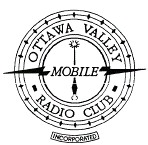While working across digital modes the trans-coding can really distort audio quality for the voices you know and recognize! This was the situation with my access to the Friday night CANNET working cross-modes with my C4FM and DMR handi-talkies and a jumbo-spot running pi-star.
The search for some better audio quality led me to take another look at Peanut, an amateur radio software available by David Grootendorst (PA7LIM), see link below. My first exposure to Peanut was through Norm (VE3LC) and his February 2021 Rambler article (see link below). Other resources include the August 2020 CQ magazine article by Murray K3BEQ as well as excellent YouTube videos and the how-to oriented text available on Peanut available from PA7LIM’s web-site.
While not understanding much about the nuts-and-bolts under the hood, the apparent reason for the superior audio quality into D-STAR has to do with the trans-coding of Peanut “Rooms” with AMBE3000 vocoder processors resulting in compatible and high quality audio.
I installed the Android and Windows version of Peanut and requested my peanut registration number from PA7LIM, provided my DMR number and was able to be “found” in the USTRUST part of the set up menu.


The only tricky bit I encountered in reaching the CANNET D-STAR reflector 103b was in the “General” group of settings with the “Master” drop down menu, which had to be changed from the default “Global” setting to “USA”. With this selection made the dashboard with the US selection in the “Category” drop down menu was then able to display DCS103b in the “Room” drop down menu. Unfortunately the US category will not display Room DCS103b until the master setting is changed.
I was stumped by this for a while until I asked Peanut users Don VE3PM and Les VE3PL who kindly provided me with this tip just in time to access the Friday night CANNET on January 20th - Thank you gentlemen! During the CANNET I could also monitor the net either from the Peanut dashboard where a “last heard list” could be initiated from the set-up menu or at-source on the VE3RXR dashboard (see link below).
**add bit on “scan” function and “echoecho” test function;
**limited selection of stations and no C$FM bridge to Wed net - strictly C4FM only – avoiding all the challenges of cross mode communication;

There are a wide variety of “Rooms” on Peanut that are dedicated spaces for countries, regions, language groups and interest groups covering everything from Blindhams, CW, POTA to SSTV. Lots to explore with great audio!
73, Alan VA3IAH
REFERENCES:
David (PA7LIM) https://www.pa7lim.nl/peanut/ -Rooms http://peanut.pa7lim.nl/rooms.html -AMBE3000: https://www.pa7lim.nl/ambepage/ Norm (VE3LC) https://ovmrc.ca/Rambler/Archive/Ram2021-02.pdf Stuart (M0SGS) https://www.youtube.com/watch?v=NqognHpUeJA Murray (K3BEQ) https://www.qsl.net/kb9mwr/projects/dv/multi/Ham%20Radio%20Peanut.pdf VE3RXR Dashboard (to monitor 103b) http://69.60.225.181/ Luc (ON7DQ) https://reflector.sota.org.uk/t/sota-room-in-peanut/22419
Alan VA3IAH
Appears in: Rambler Vol 65 Issue 6, February 2023


